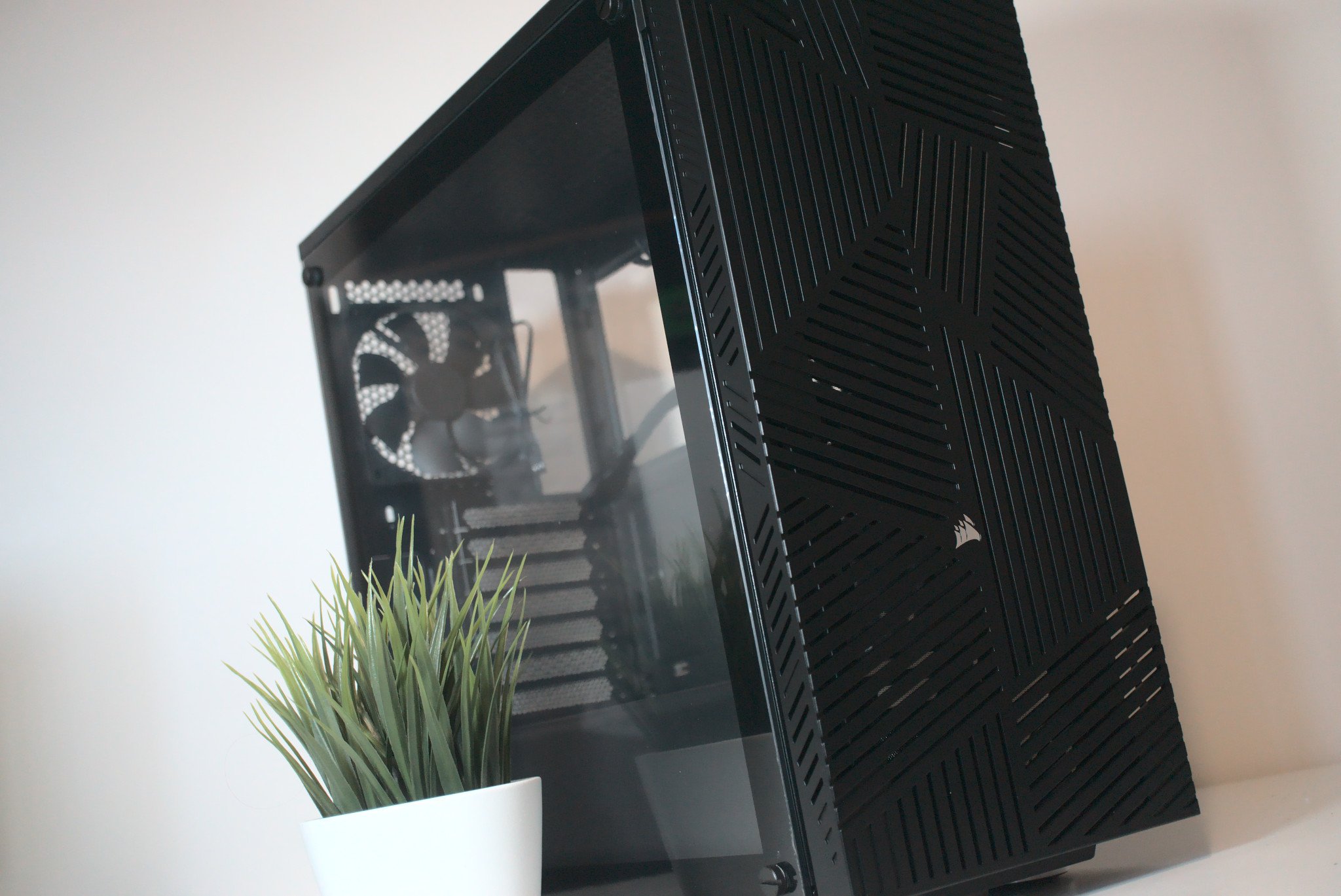There are so many PC cases to choose from, especially in the mid-tower segment. In this highly competitive space, Corsair is attempting to differentiate its more affordable offering in the form of the 275R with an Airflow version that focuses on maximizing how much air can be pushed through the chassis.
Available in either black or white, this value case comes with a tempered glass side panel, which is a luxury feature in itself. As well as the glass viewing window, there's a front panel with lattice cutout lines for both style and function. Support for up to a 360mm radiator allows for considerably powerful processors and larger AIO solutions.
Not everything is great for this affordable Corsair case. Upon closer inspection, it's clear there's a lack of any USB-C ports on the front panel. This could be a deal-breaker for those using accessories that lack a USB-A adapter and is something even value competition offerings offer.
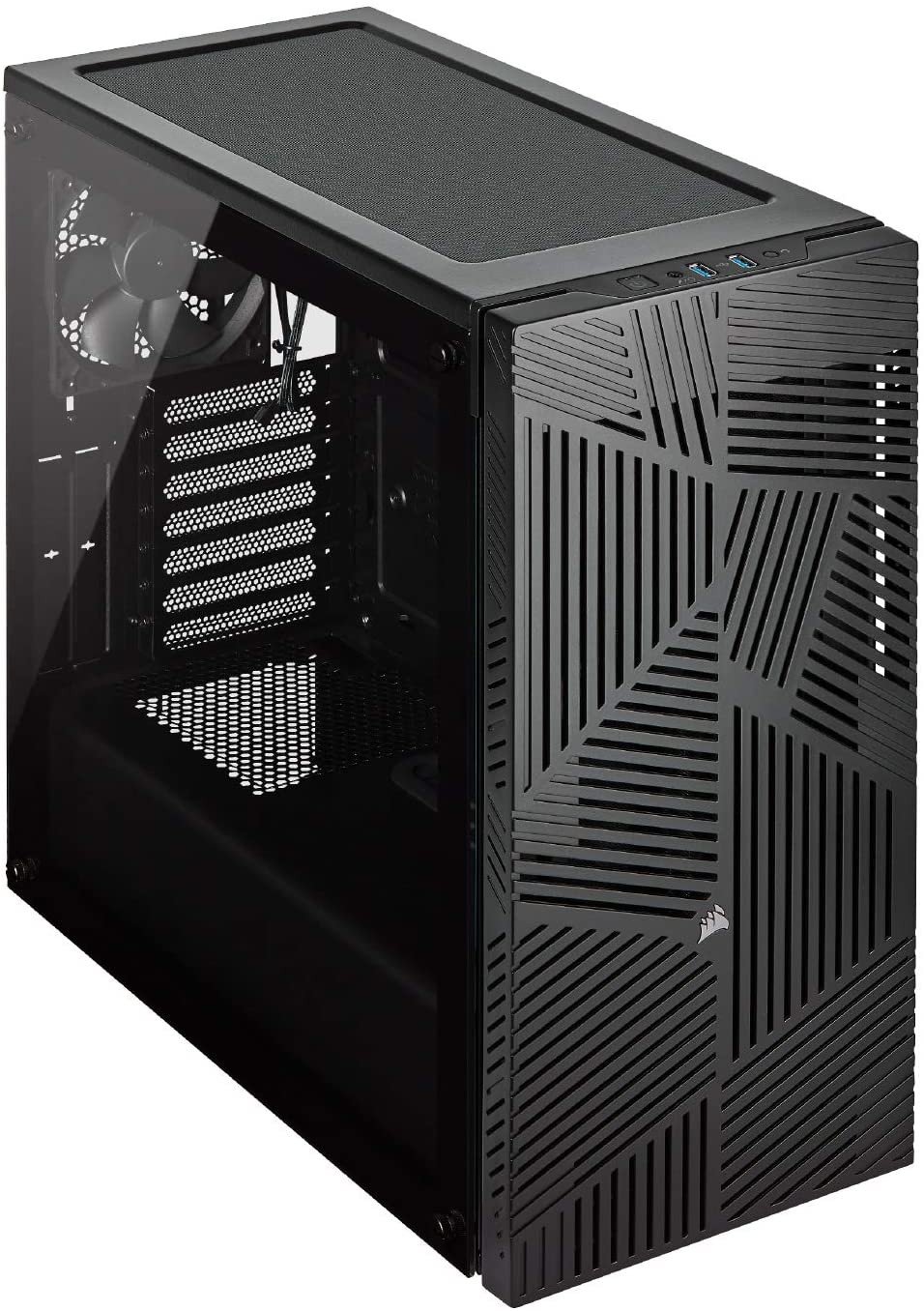
Bottom line: If you consider the Corsair 275R Airflow with the price in mind, this is a difficult case to beat, so long as you don't require front USB-C. It has three fans to get you started, plenty of AIO support, and enough space for larger motherboards and GPUs.
For
- Good out-the-box cooling
- Excellent AIO support
- Great thermal performance
- Spacious internals
- Striking design
Against
- Some parts feel cheap
- Outdated cable management
- No front panel USB-C
- Front panel is difficult to remove
Corsair 275R Airflow: Price and availability

The main highlight of the Corsair 275R Airflow is the price. It's available for around $80, though you'll be able to find it less when on sale. We managed to snag one in the UK for £40 ($55). For a case with a tempered glass panel and good airflow, this is an absolute steal for those on tighter budgets.
Corsair 275R Airflow: What's good
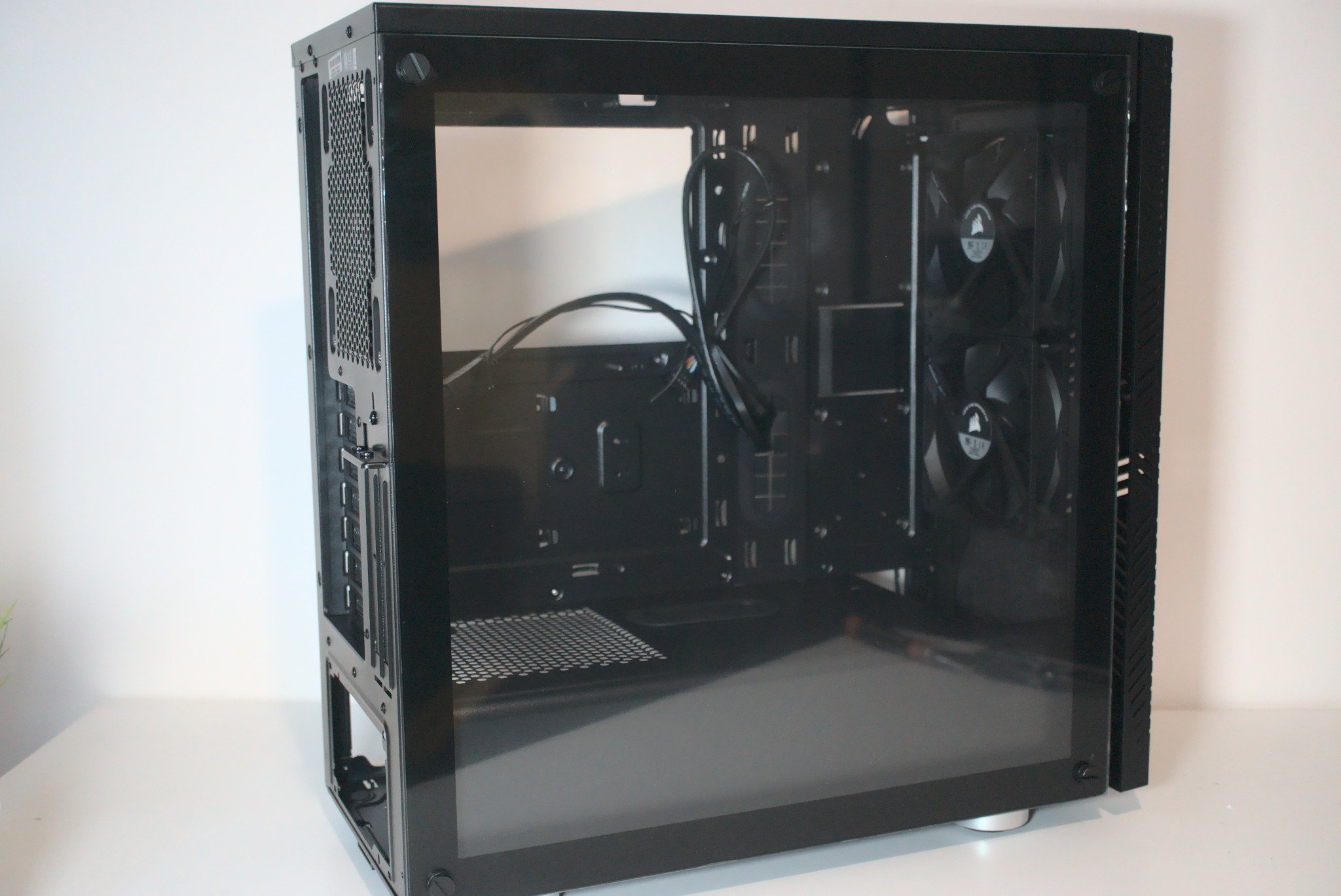
Corsair PC cases cover a wide spectrum, ranging from aggressive gamer styling to outrageous functionality. The 1000D is a super tower that can house two computers (yes, two) with up to eight fans on the front panel alone. That's more than what the Corsair 275R Airflow can handle altogether. But that case also costs considerably more than this one.
Where the 275R fits in is between the super affordable and mid-range, offering some premium features reserved for more expensive cases. After unboxing the cases, it doesn't look cheap at all. In fact, I was pleasantly surprised at just how well designed the 275R is, aside from the small gap between the front panel and main body.
Speaking of the front panel, we've got the lattice style cutouts for pulling in air. This is on the sides of the front panel too and it looks great in black. On the right side, it's the usual bare metal side panel. The opposite side is the tempered glass window, which is held to the chassis with four thumbscrews. The top houses the dust filter and fan grill.
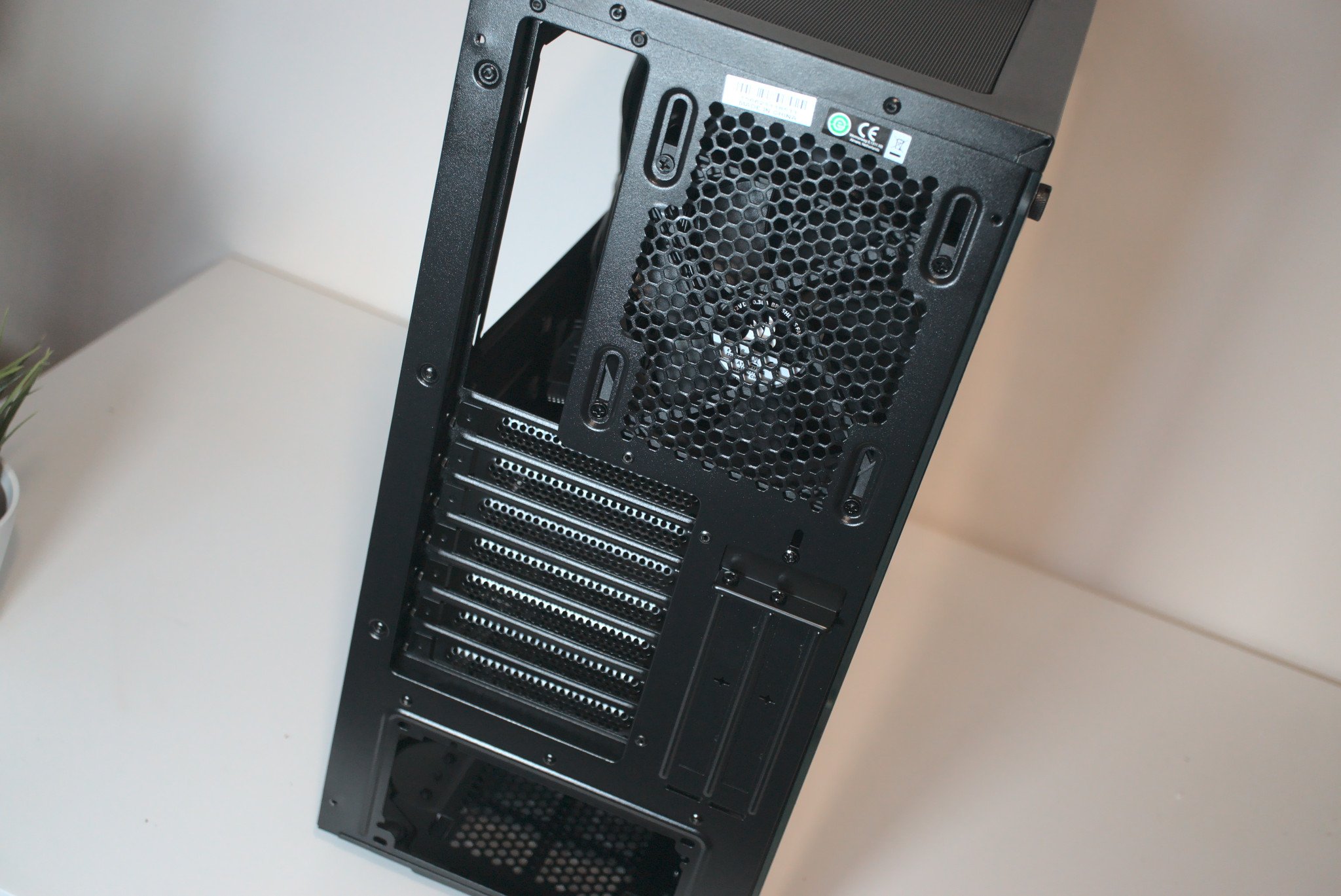
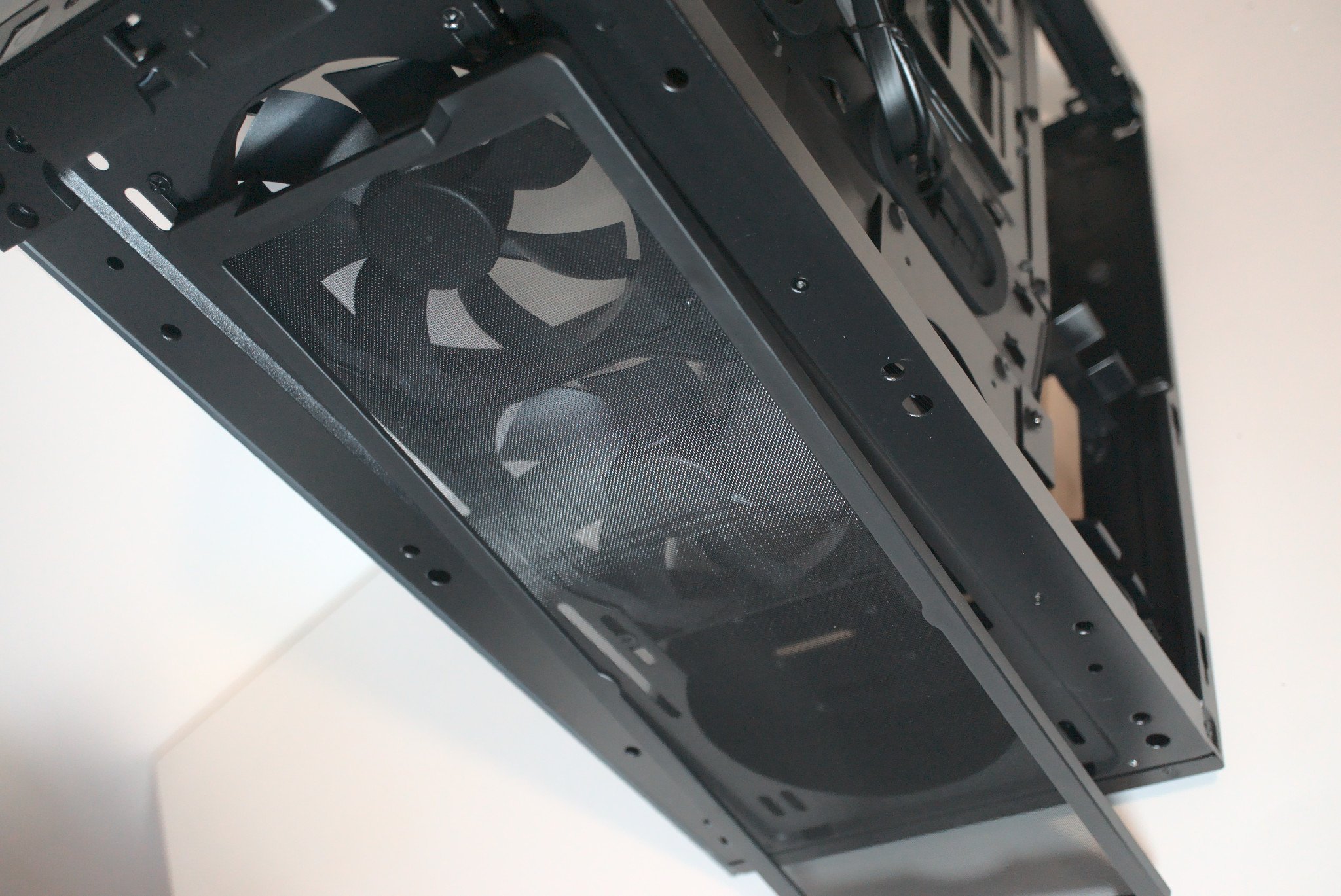
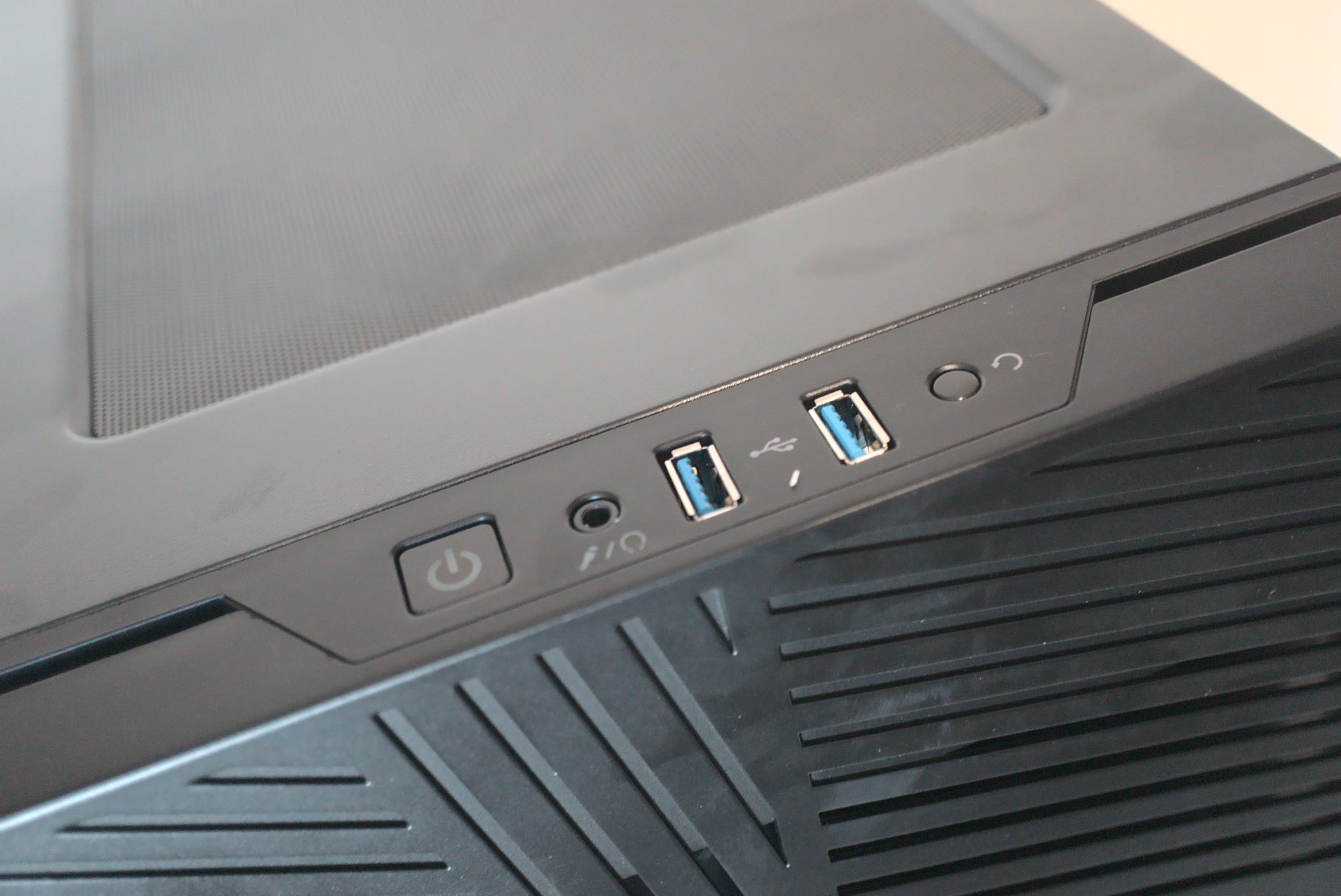
| Category | Corsair 275R Airflow |
|---|---|
| Motherboard | Mini-ITXMicro-ATXATX |
| I/O | 2x USB-A 3.01x Headphone/Microphone |
| Expansion | 7 horizontal PCI2 vertical PCI |
| Storage | 4x 2.5-inch SSD2x 3.5-inch HDD |
| PSU | ATX |
| Included fans | 3 |
| Top fans | 2x 120mm1x 140mm |
| Rear fan | 1x 120mm |
| Front fans | 3x 120mm2x 140mm |
| Top rad | 240mm |
| Front rad | 360mm, 280mm |
| Filters | FrontTopBottom |
| Clearance | GPU: 370mmCPU: 170mm |
| Dimensions | 17.99 x 8.5 x 17.91 inches(457mm x 216mm x 455mm) |
| Weight | 15.2 pounds (6.9kg) |
| Materials | SteelTempered glass |
| Warranty | Two years |
| Color | BlackWhite |
The Corsair 275R supports motherboard sizes up to ATX. Don't even consider installing a larger board as the tray protrudes with the cable grommets. Seven horizontal PCI expansion slots are located on the rear, though Corsair does allow the vertical mounting of GPUs and two further PCI slots are available for this reason.
It's possible to install up to four 2.5-inch and two 3.5-inch drives. Up to seven fans can be installed, allowing for one super-cooled PC. The hard drive cage does not need to be removed in order to maximize front space for a 360mm radiator. This is an issue I found with the Fractal Design Meshify C. Fan filtering is present on front, top, and bottom panels.
Where things become a little basic and dated is behind the motherboard tray. The grommets are large for routing cables, but there aren't any channels and minimal mounting locations. This doesn't mean you can't create a clean finish but makes it a little trickier to get everything in place.
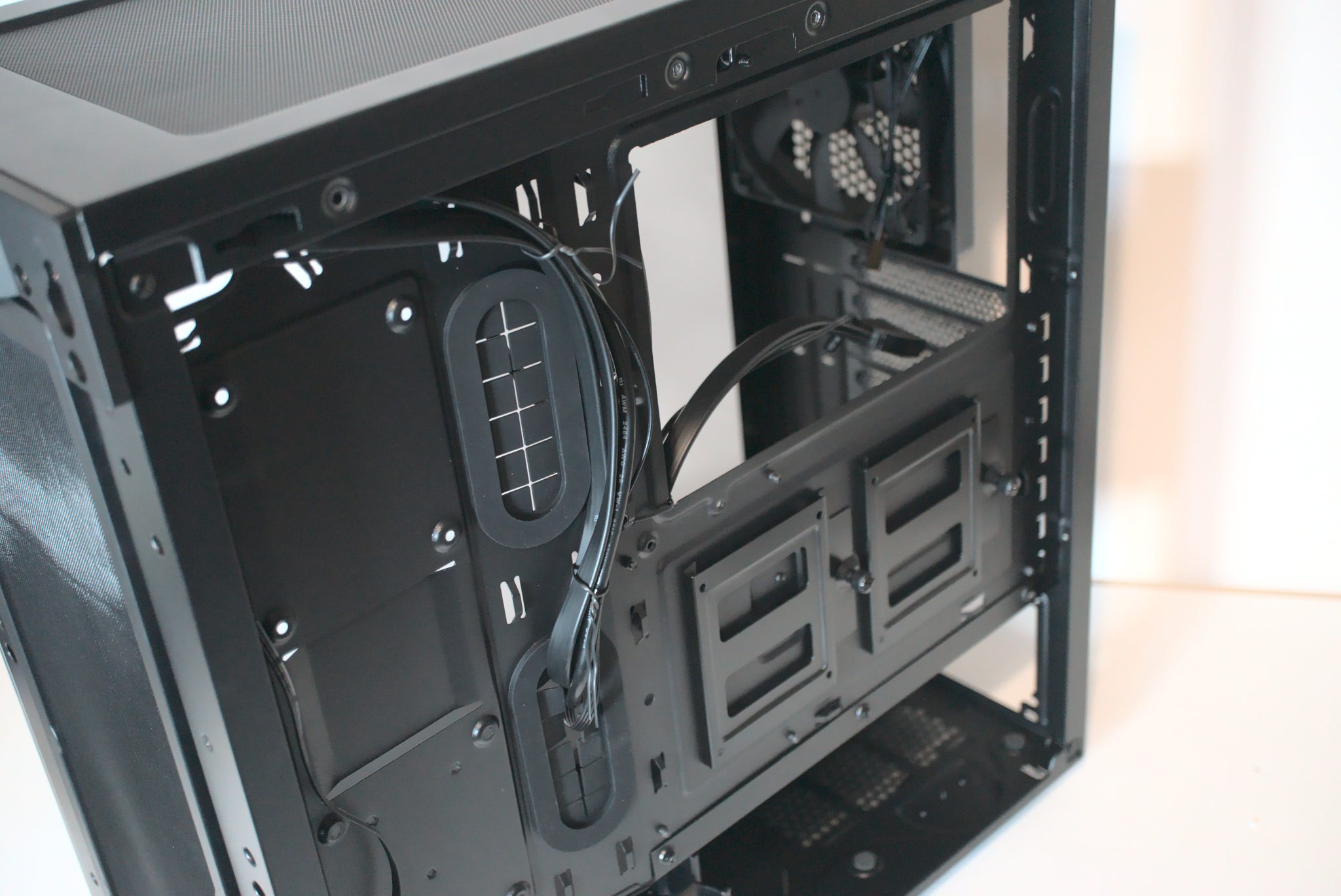
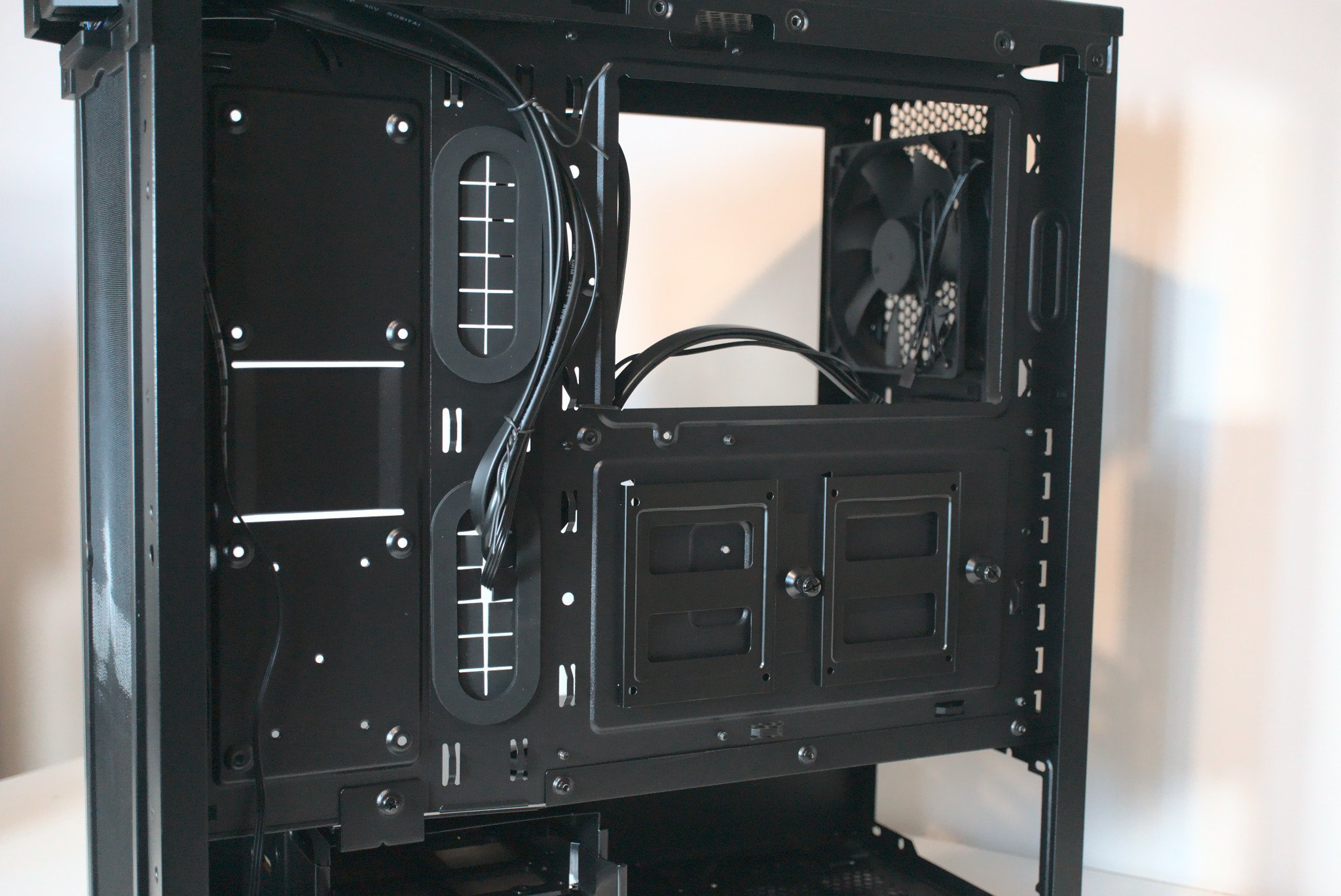
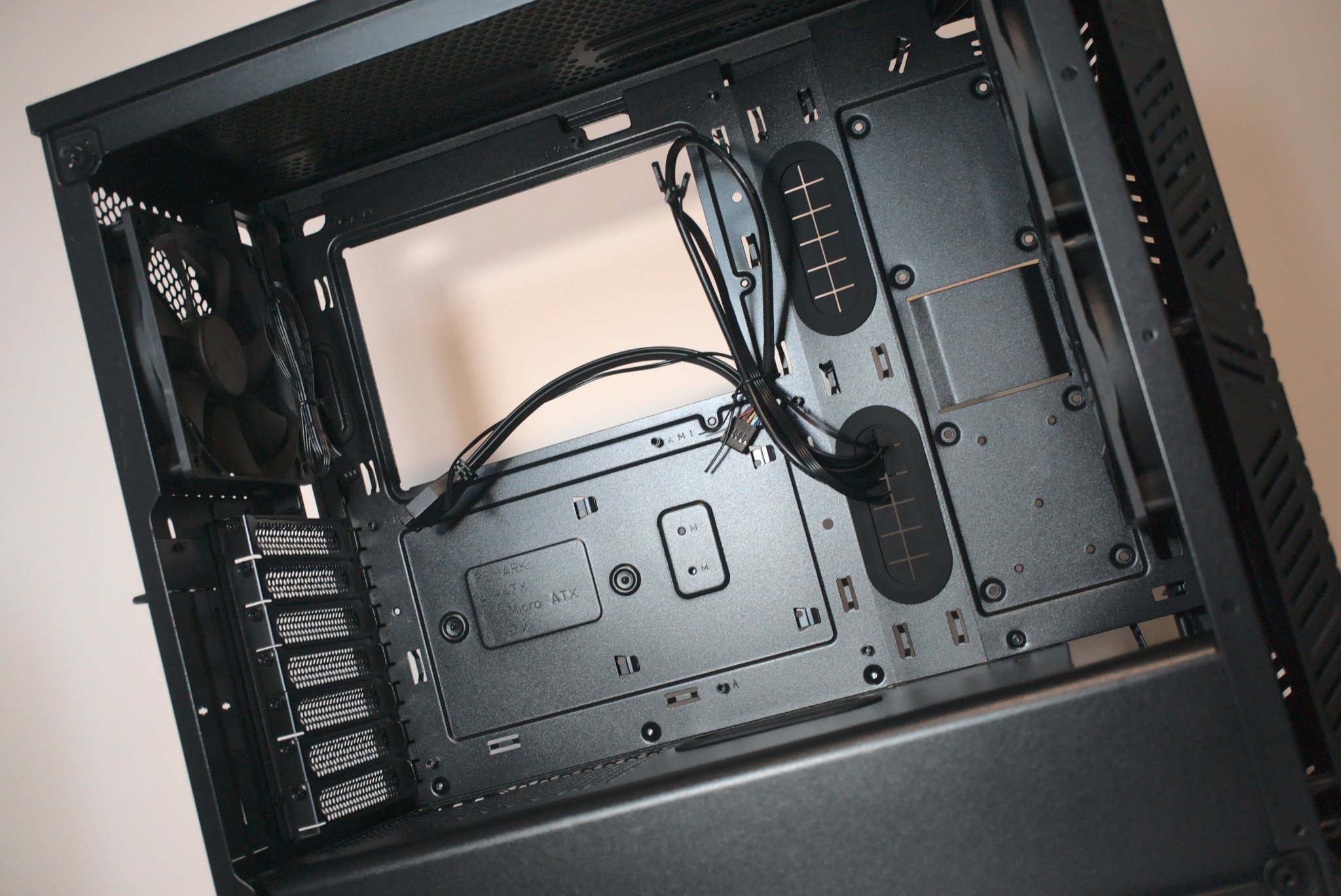
The Corsair 275R Airflow offers impressive thermal performance for the price.
As for building inside the Corsair 275R, which is the most important part of even the best PC cases, it's a smooth process. There's plenty of space to work in and panels can be removed with thumbscrews. The front panel is held on via plastic clips and requires some considerable force. It would have been nice to see the use of magnets here.
The PSU shroud will support ATX power supplies, though I'd avoid installing any that are larger than the standard dimensions. It's possible, but you will eat into valuable cable management space. As with all the other recent case reviews, I put together a test rig with an AMD Ryzen 9 5950X to see how the Corsair 275R would handle even the more power-hungry processors.
This CPU pumps out plenty of heat, which the be quiet! Dark Rock Pro 4 was more than happy to manage. To allow for convenient fan management, the ASUS ROG X570 Crosshair VIII Extreme was used as the foundation.
| Case | CPU temp | GPU temp | Noise |
|---|---|---|---|
| be quiet! Silent Base 802 | 65C | 54C | 37 dBA |
| Corsair 275R Airflow | 66C | 56C | 39 dBA |
| Fractal Design Meshify C | 68C | 56C | 40 dBA |
| Razer Tomahawk | 73C | 64C | 42 dBA |
| NZXT H510i | 75C | 63C | 43 dBA |
As expected, the Corsair case performed really well, beating out the Fractal Design Meshify C, but within a margin of error. These cases are priced similarly, though you often find the Corsair 275R on sale more frequently. The be quiet! Silent Base 802 is still the go-to case for maximum cooling performance in this segment of cases, however.
Corsair 275R Airflow: What's not good
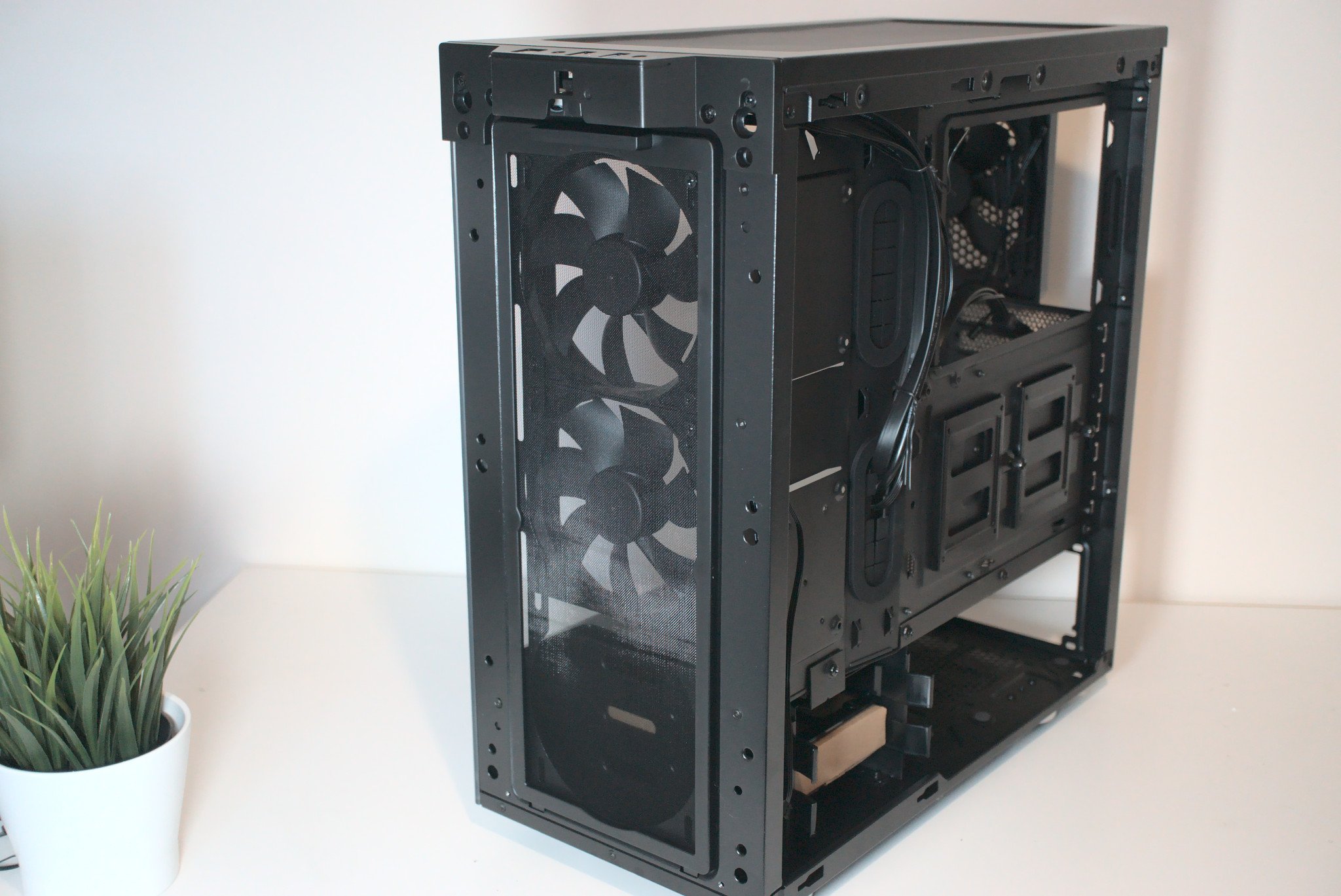
There are a few drawbacks to the Corsair 275R Airflow, which starts with the feeling of cheapness in areas. Corsair clearly cut corners to keep the price low, and there's no more obvious part than the front panel. It's held to the main body with outdated plastic clips that prove difficult to remove.
The cable management is also from before 2020, and you may find it difficult to keep everything tidy behind the motherboard tray. If you'd rather have the case maker provide specific channels for routing spaghetti, this case isn't for you. Oddly enough, there's no front panel USB-C, which isn't good considering many motherboards today support the feature.
Corsair 275R Airflow: Competition
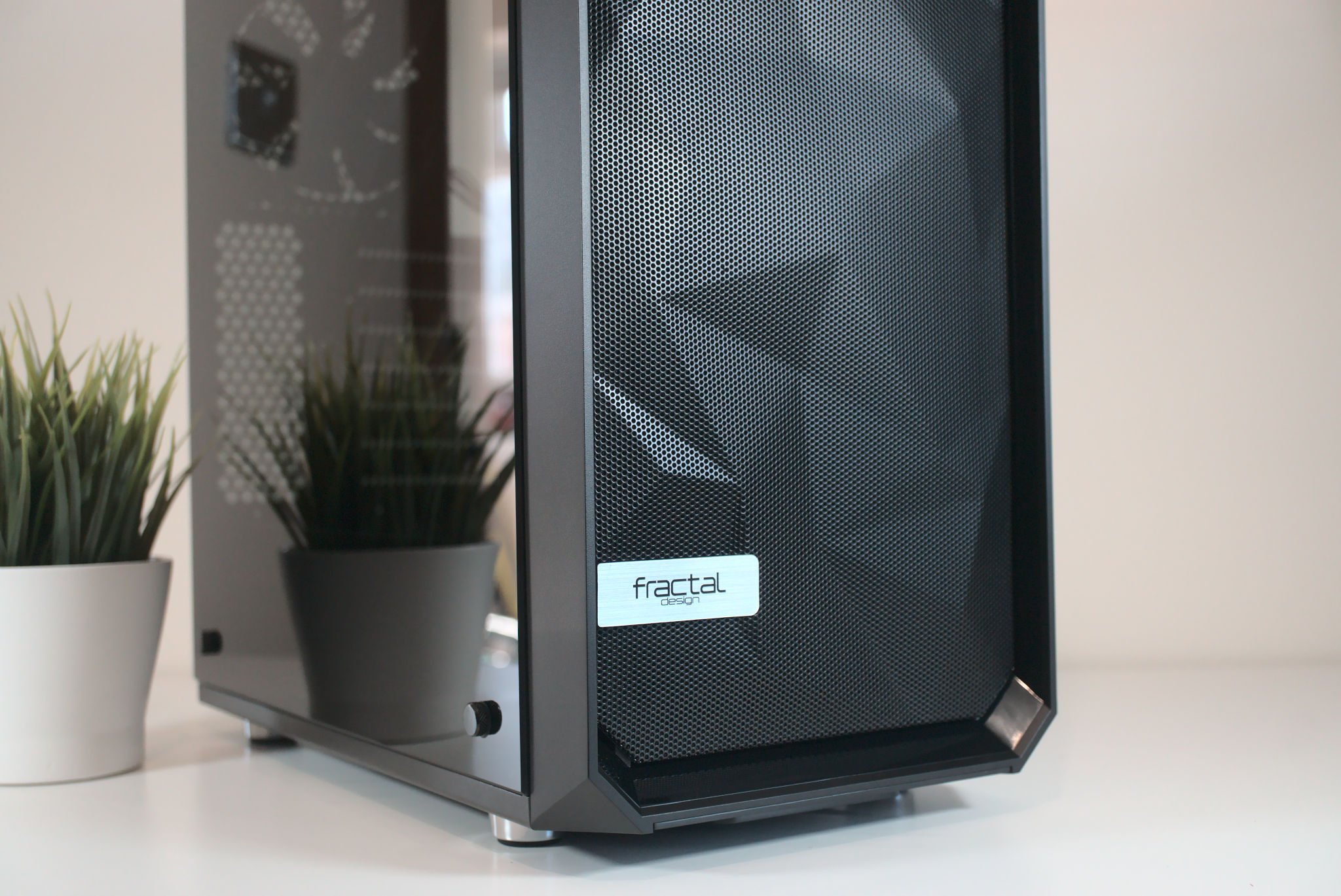
The competition is fierce in this price range. There are numerous solid PC cases to choose from, including the aforementioned Fractal Design Meshify C, which is a little more modern with better cable management. The NZXT H510i Elite has weaker thermal performance, but has a vastly more premium styling, making it appear far more expensive.
Then there's the impressive be quiet! Silent Base 802, which costs more than the 275R, but comes with more features and better overall build quality, should your budget be able to stretch.
Corsair 275R Airflow: Should you buy it?
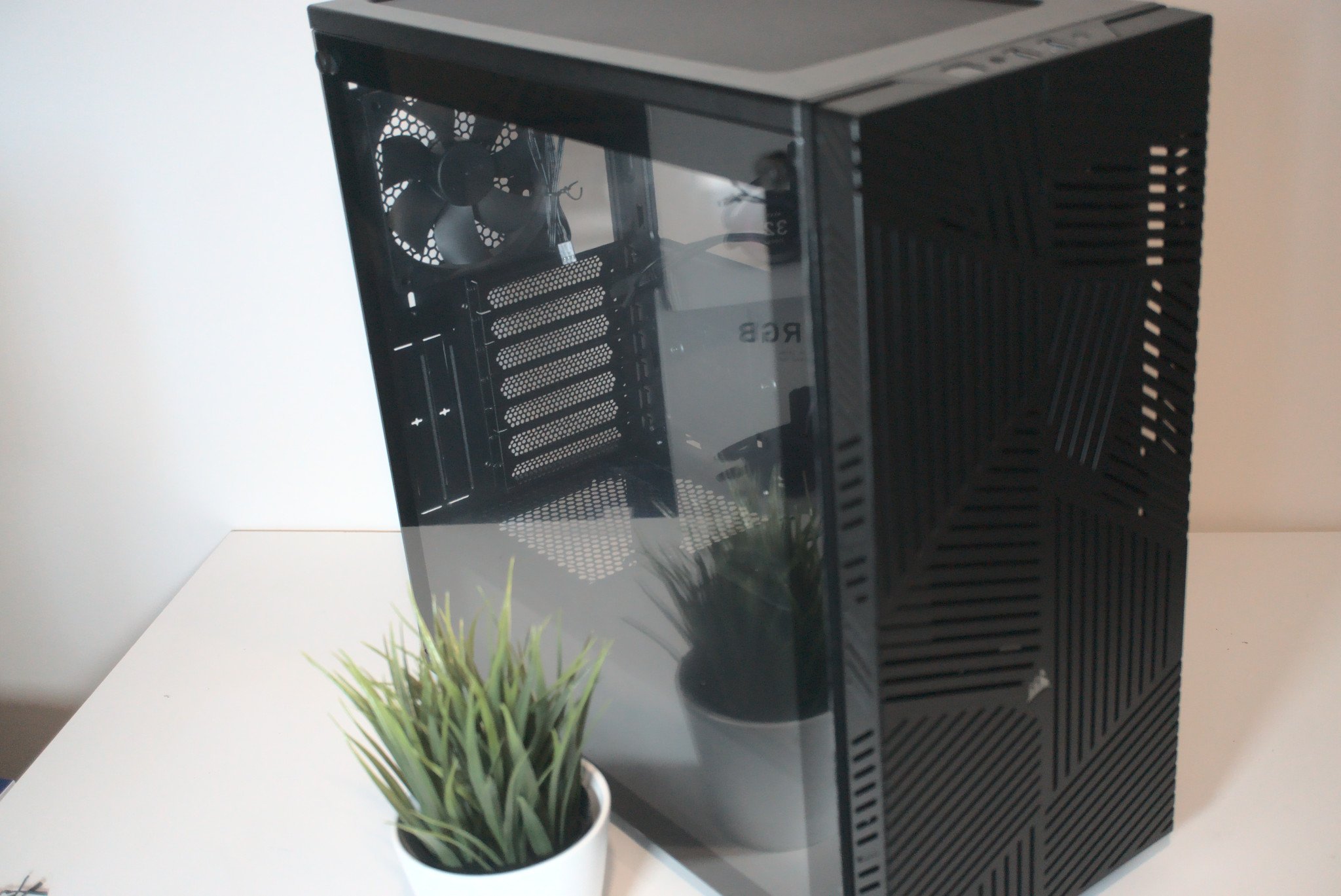
You should buy this if ...
- You're on a tight budget
- You want a cool PC under load
- You plan on using a 360mm radiator AIO
- You want an understated design
You shouldn't buy this if ...
- You want RGB lighting out the box
- You want more premium features
- You want the best cable management
- You need front panel USB-C
You should consider the Corsair 275R Airflow if you're on a tighter budget, want a cooler PC under load, plan on using AIO for CPU cooling, and prefer a subtle design. It's an attractive case that's easy to work with. It's just a shame it doesn't have better cable management and front panel USB-C connectivity.
I appreciate what Corsair has done with the 275R Airflow. It's aggressively priced and frequently on sale, offers those with tighter budgets tempered glass, and performs admirably in synthetic benchmark tests. It's not the most modern case around, nor will it win any awards, but this is one seriously good value case.

Rich Edmonds was formerly a Senior Editor of PC hardware at Windows Central, covering everything related to PC components and NAS. He's been involved in technology for more than a decade and knows a thing or two about the magic inside a PC chassis. You can follow him on Twitter at @RichEdmonds.
